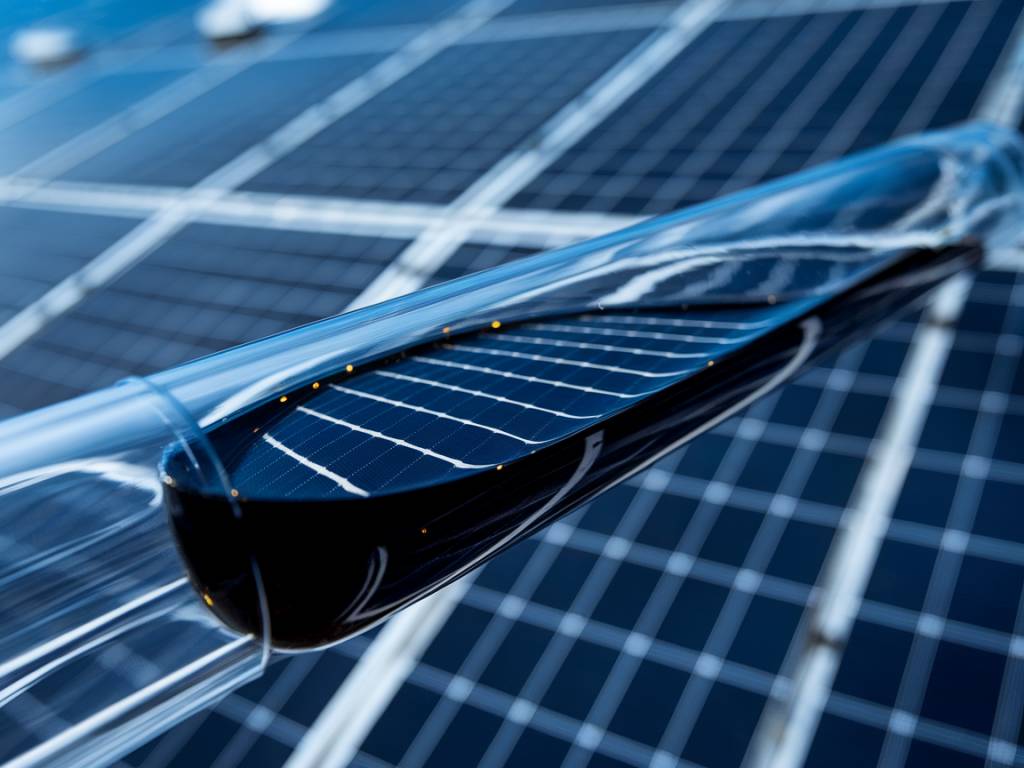Solar Innovation Comes Home: A Light at the End of the Tunnel
Imagine powering your home with windows that collect sunlight, roof shingles that generate energy, or a garden shed that stores its own electricity for rainy days. These aren’t futuristic fantasies from science fiction—they’re some of the latest breakthroughs in residential solar technology. And they could soon redefine the way we think about energy at home.
At The Green Magazine, we’re always scanning the horizon for tangible, science-backed advancements that empower individuals. The solar tech of today isn’t just more efficient—it’s smarter, more adaptable, and increasingly seamless with everyday life.
Transparent Solar Panels: Energy Through Your Windows
What if your windows could do more than offer a view? Researchers at Michigan State University have developed transparent solar cells that can be embedded into glass surfaces—turning windows into electricity generators while still letting the sunlight pour in.
These Transparent Luminescent Solar Concentrators (TLSC) capture ultraviolet and infrared light (invisible to the naked eye), then transfer this energy to traditional solar cells at the edge of the panel. The result? A nearly invisible solar film that’s estimated to potentially offset up to 40% of U.S. electricity demand if adopted widely.
While commercialization is still in progress, smaller integrations into smart windows, greenhouse panels, or skylights are already in pilot phases. For eco-conscious homeowners, that means you might one day charge your devices with the sunlight streaming through your bedroom window.
Solar Roof Tiles: The End of Bulky Panels?
Gone are the days when solar meant strapping oversized panels onto a home’s roof. Enter solar roof tiles, sometimes called solar shingles, championed by companies like Tesla, SunTegra, and Luma Solar. These photovoltaic systems integrate directly with your roof materials, delivering all the functionality of traditional panels—without compromising aesthetics.
The appeal is obvious: your roof protects your home, and now it can also power it. Each tile or shingle contains solar cells within weather-resistant materials, making them as robust as conventional roofing solutions. Better still, these systems are modular, meaning you can adapt them to your home’s specific dimensions or energy needs.
Installation remains more expensive than conventional panels for now, but prices continue to fall, and their lifespan—usually upwards of 25 years—makes them a compelling long-term investment for those building or renovating an eco-friendly home.
Perovskite Solar Cells: Tiny Crystals, Big Potential
Named after a 19th-century mineral, perovskites represent one of the most promising frontiers in solar technology. These materials are inexpensive to produce and ultrathin, allowing for lighter and more flexible solar devices.
Recent advances at Oxford PV and other labs have led to perovskite-silicon tandem cells with conversion efficiencies exceeding 30%—significantly higher than current commercial silicon panels. In practical terms, this means rooftops could generate more electricity with less surface area.
Because they’re lightweight and flexible, perovskite cells could soon be embedded into a variety of surfaces: outdoor furniture, backpacks, or even retractable solar awnings for tiny houses. The possibilities for eco-driven minimalism are expanding fast.
Solar Thermal Batteries: Finally Saying Goodbye to the Grid?
One of solar’s longstanding limitations has been its intermittency: no sun, no energy. But what if your home could store heat during the day and release it at night? Enter solar thermal batteries, a solution that’s gaining ground in off-grid and hybrid homes.
Companies like Sunamp and Thermal Energy Storage Systems have developed products that store solar-generated heat in phase change materials (PCMs), which can then provide hot water or indoor heating hours after the sun has set. These units are compact—some no larger than a small refrigerator—and can work alongside photovoltaic panels to reduce household grid dependency drastically.
While more common in Scandinavian and Canadian homes for now, thermal batteries are proving particularly effective in temperate climates with seasonal heating demand. For the future-focused homeowner, installing both PV and thermal systems means embracing the full spectrum of solar innovation.
Smart Solar Integration: When AI Meets the Sun
Modern solar isn’t just about capturing energy—it’s about using it intelligently. With the rise of smart inverters, home energy monitors, and AI-driven energy apps, homeowners can now optimize their solar setup like never before.
Take Span, for example—a smart electric panel that syncs with your solar system and storage, allowing real-time control of home energy use. Want to charge your EV during peak solar hours? Or prioritize your fridge and lights during a blackout? With these systems, energy autonomy isn’t a dream—it’s a touch away on your phone.
This new wave of solar intelligence is also contributing to decentralized grid resilience. In areas prone to outages or extreme weather events, homes equipped with smart solar + storage systems can remain functional while others go dark. It’s eco-tech that meets the moment.
Flexible Solar Films for Urban Living
Living in a city apartment or renting your home? That doesn’t have to mean sacrificing solar possibilities. Flexible solar films—light, adhesive, and often rollable—are redefining where solar can go.
These thin films, made from organic photovoltaic (OPV) materials or CIGS compounds, can be applied to curved surfaces, balcony railings, carports, and even backpacks. Companies like Heliatek and PowerFilm are already testing commercial applications, offering portable, adaptable solutions in the hands of everyday eco-citizens.
While their efficiency remains lower than rigid panels, their ease of use and ultra-lightweight design make them a valuable stepping-stone for urban dwellers looking to reduce their footprint—even if only to power a phone, laptop, or balcony string lights.
Stories from the Solar Frontier: A Glimpse Into What’s Possible
Emma, a retiree in southern France, recently installed building-integrated photovoltaics (BIPV) on her guesthouse—transforming it into a self-powered Airbnb. Her setup combines solar façade tiles with a solar awning and thermal battery, allowing guests to experience net-zero living firsthand. « It’s not just sustainable, » she says. « It’s beautiful. »
In Brooklyn, NY, a multigenerational family swapped out their aging rooftop panels for newer perovskite-silicon hybrids. Paired with a Tesla Powerwall and AI-integrated energy monitor, their townhouse now uses roughly 85% renewable energy and serves as a model for the block. “I never thought living in the city could feel this green,” says Andre, the father of the family and a local teacher.
And in Melbourne, Australia, a permaculture collective is experimenting with foldable solar films sewn into canvas tents and greenhouses—providing lighting, phone charging, and irrigation support in off-grid zones. It’s proof that low-tech and high-tech innovation can coexist superbly.
Should You Wait, or Dive In?
With so many advancements on the horizon, it’s natural to ask: “Should I invest in solar now, or wait until the ‘next big thing’ becomes affordable?” The answer depends—on your budget, your home setup, and your personal energy goals.
However, many of these technologies are already within reach, and incentives (especially in Europe and North America) are often highest when a tech is new to market. The key is to find scalable solutions that match your household’s needs, whether you’re replacing an aging roof, building a passive house, or simply greening your next renovation.
And if you’re not ready for full solar just yet? Try starting small. Smart plugs that sync with sunny weather forecasts. Mini solar lamps for your patio. A solar power bank for weekend hikes. Every watt counts. And every innovation, no matter how small, brings us one step closer to resilient, carbon-free living at home.
The sun has always powered life on Earth. Now, for the first time in human history, it can power our homes—smarter, sleeker, and more elegantly than ever before.



